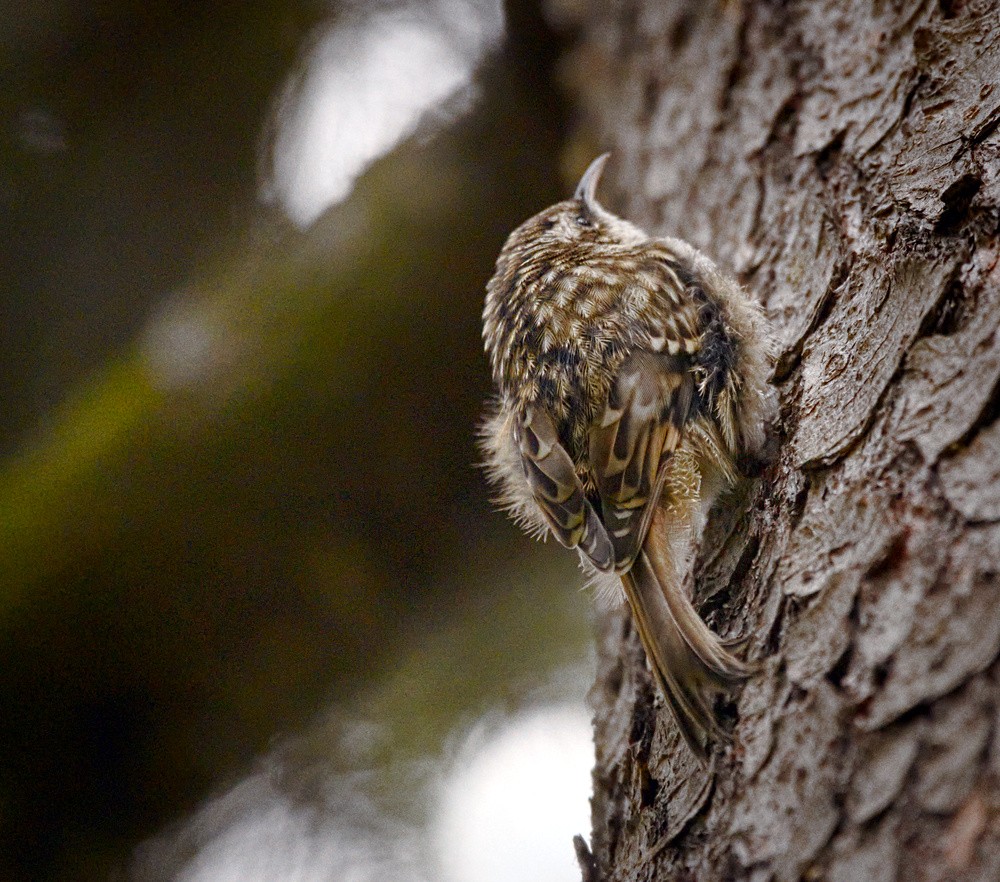Short-toed Treecreeper
A species of Typical Treecreepers Scientific name : Certhia brachydactyla Genus : Typical Treecreepers
Short-toed Treecreeper, A species of Typical Treecreepers
Botanical name: Certhia brachydactyla
Genus: Typical Treecreepers
Content
Description General Info
 Photo By hedera.baltica , used under CC-BY-SA-2.0 /Cropped and compressed from original
Photo By hedera.baltica , used under CC-BY-SA-2.0 /Cropped and compressed from original Description
All the treecreepers are similar in appearance, being small birds with streaked and spotted brown upperparts, rufous rumps and whitish underparts. They have long decurved bills, and long stiff tail feathers which provide support as they creep up tree trunks looking for insects. The short-toed treecreeper is 12.5 centimetres (4.9 inches) long and weighs 7.5–11 g (0.26–0.39 oz). It has dull grey-brown upperparts intricately patterned with black, buff and white, a weak off-white supercilium and dingy underparts contrasting with the white throat. The sexes are similar, but juveniles have whitish underparts, sometimes with a buff belly. The call of this species is a repeated shrill tyt...tyt tyt-tyt and the song of the nominate subspecies is an evenly spaced sequence of notes teet-teet-teet-e-roi-tiit. There is some geographical variation; the song of Danish birds is shorter, that of the Cyprus subspecies is very short and simple, and the North African version is lower pitched. European birds do not respond to latter two song variants. This species shares much of its range with the common treecreeper. Compared to the short-toed, that bird is whiter below, warmer and more spotted above, and has a whiter supercilium and slightly shorter bill. However, identification by sight may be impossible for poorly-marked birds. Vocal birds are usually identifiable, since Common has a distinctive song composed of twitters, ripples and a final whistle and a shree' call rarely given by the short-toed; however, both species have been known to sing the other's song. Even in the hand, although the short-toed usually has a longer bill and shorter toes, 5% of birds are not safely identifiable. The brown treecreeper has never been recorded in Europe, but would be difficult to separate from the short-toed treecreeper, which it much resembles in appearance. Its call is more like the common treecreeper's, but a vagrant brown treecreeper might still not be possible to identify with certainty given the similarities between the three species. 
Size
12 cm
Colors
Brown
Gray
White
Life Expectancy
9 years
Nest Placement
Tree
Feeding Habits
Short-toed Treecreeper primarily consumes invertebrates, spiraling upwards on tree trunks searching for insects and spiders in bark crevices with its long bill. Occasionally forages on walls, ground, or among pine needles, and may eat seeds in colder months.
Habitat
Short-toed Treecreeper typically resides in temperate woodlands consisting of mixed and broadleaf deciduous trees, with a preference for mature, rough-barked species like oak and pine. Habitats include forest edges, riverine areas, and well-wooded farmland, usually accompanied by a dense understorey. Short-toed Treecreeper largely avoids pure coniferous forests and is often found at lower elevations in the northern part of its range, but can inhabit mountainous regions up to 2,000 meters in North Africa and Turkey. Essential habitat features include mature trees and an environment conducive to its specific climatic preferences.
Dite type
Insectivorous
General Info
Feeding Habits
Bird food type
Sounds
Call
Recording location: Belgium
Song
Recording location: Belgium
Call
Recording location: Portugal
Distribution Area
The short-toed treecreeper breeds in temperate woodlands across Europe from Portugal to Turkey and Greece, and in north west Africa. It prefers well-grown trees, especially oak and avoids pure stands of conifers. Where it shares its European range with common treecreeper, the latter species tends to be found mainly in coniferous forest and at higher altitudes. It is usually found in the lowlands, but breeds locally at up to 900 metres (3,000 feet) in Germany, 1,800 metres (5,900 feet) France and 1,400 metres (4,600 feet) in Switzerland. In Turkey and North Africa it is a mountain species. The breeding areas have July isotherms between 17–18 °C and 26 °C (63–64 °F and 79 °F). This treecreeper is essentially non-migratory but post-breeding dispersal may lead to vagrancy outside the normal range. It has occurred as a vagrant to England, Sweden, Lithuania and the Balearic Islands. Three birds on Corsica in 1969 appeared to be of the North African subspecies C. b. mauritanica. 
Species Status
This species has an extensive range of between 1–10 million square kilometres (0.4–3.8 million square mi). It has a large population, estimated at between 4.1–14 million individuals. Population trends have not been quantified, but the species is not believed to approach the thresholds for the population decline criterion of the IUCN Red List (declining more than 30% in ten years or three generations). For these reasons, the short-toed treecreeper is evaluated as Least Concern. It is common through much of its range, but is rare in the Caucasus and on the smaller Channel Islands. In the west of its range it is spreading north through Denmark, where it first bred in 1946. 
Scientific Classification
Phylum
Chordates Class
Birds Order
Perching birds Family
Treecreepers Genus
Typical Treecreepers Species
Short-toed Treecreeper